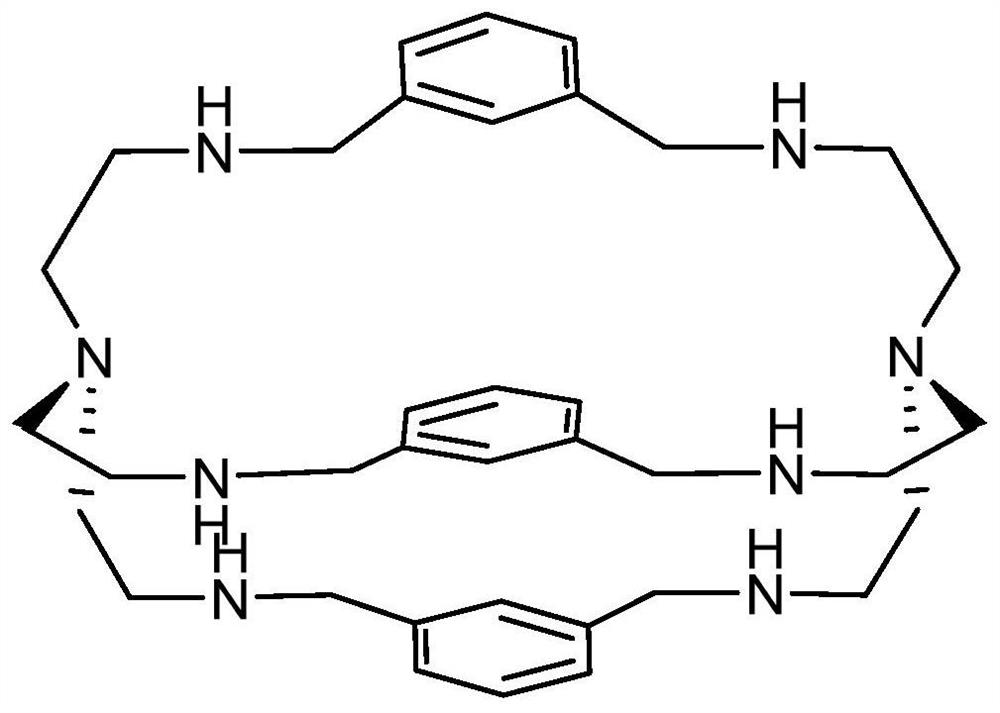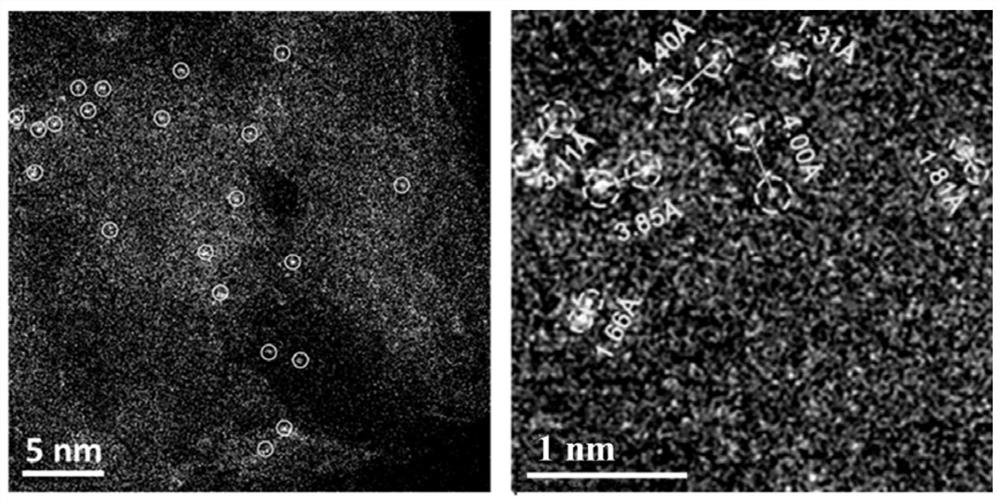A kind of method for preparing single-atom-like catalyst
A catalyst and atom technology, applied in the field of materials science and engineering, can solve the problems of single atom catalyst and reaction substrate size mismatch, lack of electron or space synergy, single metal atom small size, etc., to meet the requirements of experimental diversification , achieve precise and controllable effects, and reduce experimental requirements
- Summary
- Abstract
- Description
- Claims
- Application Information
AI Technical Summary
Problems solved by technology
Method used
Image
Examples
Embodiment 1
[0033] Preparation of organic cryptand molecules: Weigh an appropriate amount of tris(2-aminoethyl)amine and m-phthalaldehyde into a round-bottomed flask filled with acetonitrile solution, stir until completely dissolved, then mix, and continue stirring for a certain period of time. Filtration and washing yielded an intermediate product. Finally, through reduction, extraction, drying and other steps to obtain organic cryptand molecular products (such as figure 1 ).
[0034] transition metal precursors (such as figure 2 ) preparation: Weigh an appropriate amount of organic cryptand molecules and copper perchlorate hexahydrate and dissolve them in acetonitrile solution, mix and stir for a certain period of time after complete dissolution, and obtain copper precursor products after filtering, washing and drying.
[0035] Weigh 0.02g of the mixture of copper precursor and 1g of carbon black and add it into a 50mL agate ball mill jar, put some agate balls in the jar, put the aga...
Embodiment 2
[0037] Preparation of organic cryptand molecules: Weigh an appropriate amount of tris(2-aminoethyl)amine and m-phthalaldehyde into a round-bottomed flask filled with acetonitrile solution, stir until completely dissolved, then mix, and continue stirring for a certain period of time. Filtration and washing yielded an intermediate product. Finally, the organic ligand molecular product is obtained through reduction, extraction, drying and other steps.
[0038] Preparation of transition metal precursors: Weigh appropriate amount of organic ligand molecules and copper perchlorate hexahydrate and dissolve them in acetonitrile solution, mix and stir for a certain period of time after complete dissolution, and obtain copper precursor products after filtration, washing and drying.
[0039] Weigh 0.06g of the mixture of copper precursor and 3 g of carbon black and add it into a 100mL agate ball mill jar, put a number of agate balls in the jar, put the agate ball mill jar into the planet...
Embodiment 3
[0041] Preparation of organic cryptand molecules: Weigh an appropriate amount of tris(2-aminoethyl)amine and m-phthalaldehyde into a round-bottomed flask filled with acetonitrile solution, stir until completely dissolved, then mix, and continue stirring for a certain period of time. Filtration and washing yielded an intermediate product. Finally, the organic ligand molecular product is obtained through reduction, extraction, drying and other steps.
[0042] Preparation of transition metal precursors: Weigh appropriate amount of organic ligand molecules and copper perchlorate hexahydrate and dissolve them in acetonitrile solution, mix and stir for a certain period of time after complete dissolution, and obtain copper precursor products after filtration, washing and drying.
[0043] Weigh 0.2g of the mixture of copper precursor and 10g of carbon black and add it into a 250mL agate ball mill jar, put some agate balls in the jar, put the agate ball mill jar into the planetary ball...
PUM
| Property | Measurement | Unit |
|---|---|---|
| volume | aaaaa | aaaaa |
Abstract
Description
Claims
Application Information
 Login to View More
Login to View More - R&D
- Intellectual Property
- Life Sciences
- Materials
- Tech Scout
- Unparalleled Data Quality
- Higher Quality Content
- 60% Fewer Hallucinations
Browse by: Latest US Patents, China's latest patents, Technical Efficacy Thesaurus, Application Domain, Technology Topic, Popular Technical Reports.
© 2025 PatSnap. All rights reserved.Legal|Privacy policy|Modern Slavery Act Transparency Statement|Sitemap|About US| Contact US: help@patsnap.com



